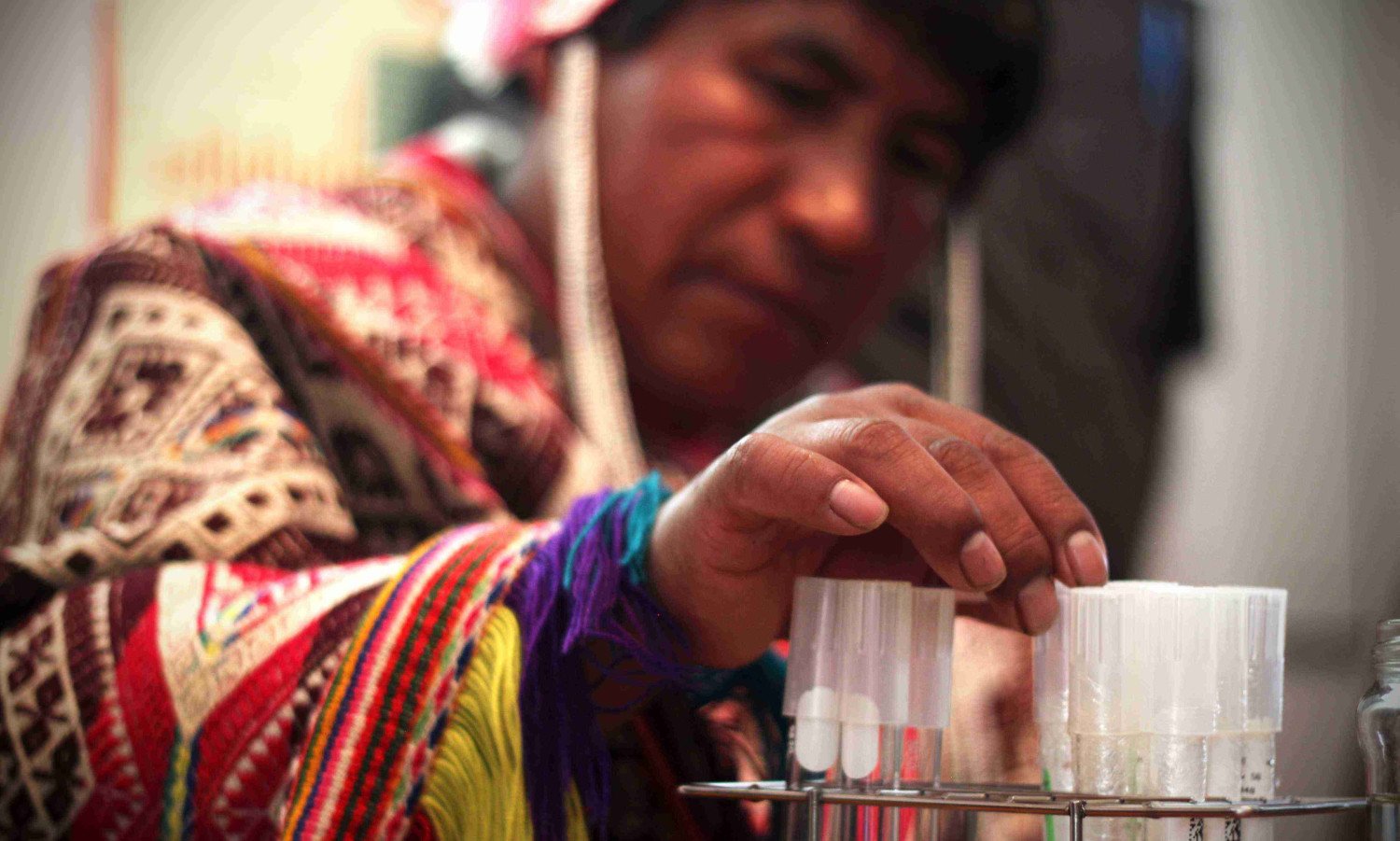Nov 4, 2021
Farming Communities Around The World Hold The Key To Food System Resilience

Image courtesy of The International Potato Center.
Editor’s Note: As food access is challenged at the hands of climate change, we need to work together to tackle the growing food access quandaries. By encouraging farmers to contribute to conservation efforts, this project is fostering stronger relationships between scientists and farming communities, who are now working together to plant and assess crop diversity. Projects like this will help us learn from the generational knowledge of farmers, and combine the same with AgTech to ensure greater food security.
CONTENT SOURCED FROM FOOD TANK
Genetic diversity is being lost at an alarming pace, according to a recent study from the American Institute of Biological Sciences (AIBS). But farmers and scientists are working to conserve the genetic diversity of crops to ensure future food systems resilience.
The stability of the global food system depends upon crop genetic diversity. It is “the very foundation of agriculture,” Dr. Nora Castañeda-Álvarez, Project Manager of Seeds for Resilience at The Crop Trust, tells Food Tank.
“Genetic diversity is the variation within species and their populations…[which] helps species to adapt and makes ecosystems more resilient,” Dr. Sean Hoban, co-author of the AIBS report and Tree Conservation Biologist at The Morton Arboretum, tells Food Tank.
Crop diversity is possible thanks “to the past, present and future contribution of farmers in centers of origin and diversity,” writes Stef de Haan, Senior Scientist on Andean Food Systems at the The International Potato Center (CIP), in Plant Genetic Resources. But today their role as custodians of genetic diversity is threatened by the pressures of global markets and climate change.
A recent paper in Evolutionary Applications estimates a six percent loss of genetic diversity in wild populations since the industrial revolution began in the mid-1700s. And authors of the AIBS study argue that, while non-governmental organizations (NGOs) are establishing ambitious goals to protect species and ecosystem diversity, targets for genetic diversity conservation are lacking.
This is because genetic diversity is “not as visible as species or ecosystem diversity,” says Hoban. “It has only been in the last 50 years or so that scientists have been able to directly measure genetic diversity, and only much more recently…at larger scales.”
Despite these challenges, scientists and rural farming communities in regions of high biodiversity are making considerable efforts to conserve diversity within crops.
The Crop Trust’s Seeds for Resilience project, for example, is hoping to strengthen links between national gene banks and farmers in five countries in sub-Saharan Africa. Gene banks, which freeze and store seeds in collections, help to safeguard crop diversity away from their natural habitats. They “play a key role as backup sites for conservation,” Castañeda-Álvarez tells Food Tank.
By working closely with gene banks, farmers can select varieties of key crops such as sorghum, millet, and cowpea with “traits that help them face climate change and other challenges,” says Castañeda-Álvarez. And farmers can also conserve any unique crop varieties they may have with the seed bank for future resilience.
The five-year project will “allow plant breeders and other scientists to study the diversity held in national gene banks and use it in breeding programs to develop new, improved varieties,” Castañeda-Álvarez tells Food Tank.
Encouraging farmers to contribute to conservation efforts, the project is fostering stronger relationships between scientists and farming communities, who are now working together to plant and assess crop diversity in the region.
Farmers can also conserve crop genetic diversity on-farm. The CIP supports this approach, working with the Indigenous communities of the Peruvian Andes to conserve potato diversity in the field.
The CIP promotes in-situ conservation, allowing for seeds to grow and adapt on-farm using more traditional methods of agriculture. As a farmer-driven strategy, it sets out to conserve both genetic and cultural diversity in agricultural systems.
“Farmer-driven conservation is intrinsically linked to continuously evolving local knowledge systems,” de Haan tells Food Tank. “It is not only about the ‘seeds’ but also the…knowledge of their use, traits, properties, names, histories, tastes, and memories.”
Since the early 2000s, the CIP has collaborated with the ANDES Association and the Potato Park, a Biocultural Heritage Landscape in Cusco, providing technical support to its six Quechua communities.
The CIP repatriated “hundreds of potato landraces from [its] gene bank to the communities so these could increase their diversity,” says de Haan.
But these efforts extend beyond recovering genetic diversity. “Society cannot expect farmers to continue managing diversity just for nostalgia or as a coping strategy to survive poverty,” de Haan tells Food Tank.
Through on-farm conservation, the Park’s communities are enhancing their livelihood opportunities with “technological, market, and policy innovations based on traditional knowledge and biocultural heritage,” Colin Khoury, co-author of the AIBS report and researcher at the International Center for Tropical Agriculture (CIAT) tells Food Tank.
The CIP is also supporting another farmer-led initiative, Association of Guardians of the Native Potato from Central Peru (AGUAPAN). AGUAPAN is made up of nearly 100 farming communities from eight regions of Peru using traditional practices of soil and seed management to grow ancestral varieties of potatoes. The organization represents farmers in government and the private sector, advocating for agrobiodiversity conservation initiatives that improve farmer livelihoods.
To scale-out these efforts, Hoban believes policymakers and NGOs should put funding toward improving systems for documenting and monitoring genetic diversity. This will “help conservationists focus on areas of high genetic diversity,” he tells Food Tank.
And De Haan emphasizes that global conservation goals should align with the needs of farmers. “There must be true value for the next generation of farmers in the ecosystem service they provide for humanity, including adequate incomes, access to education [and] health care,” he tells Food Tank.

